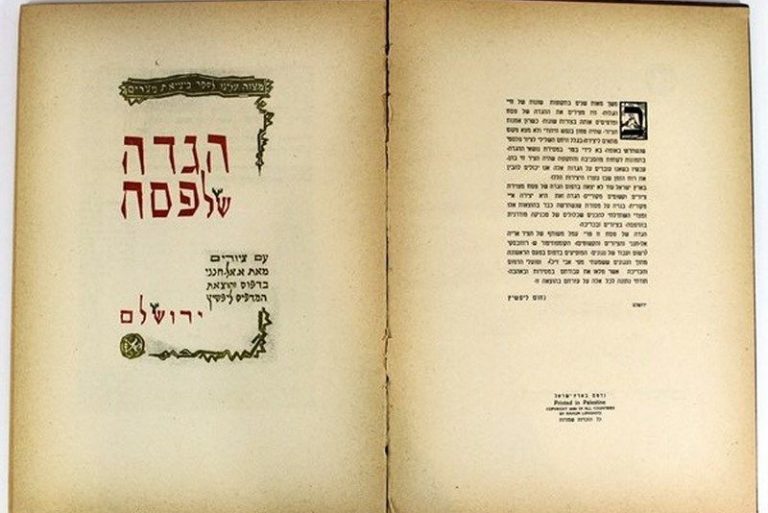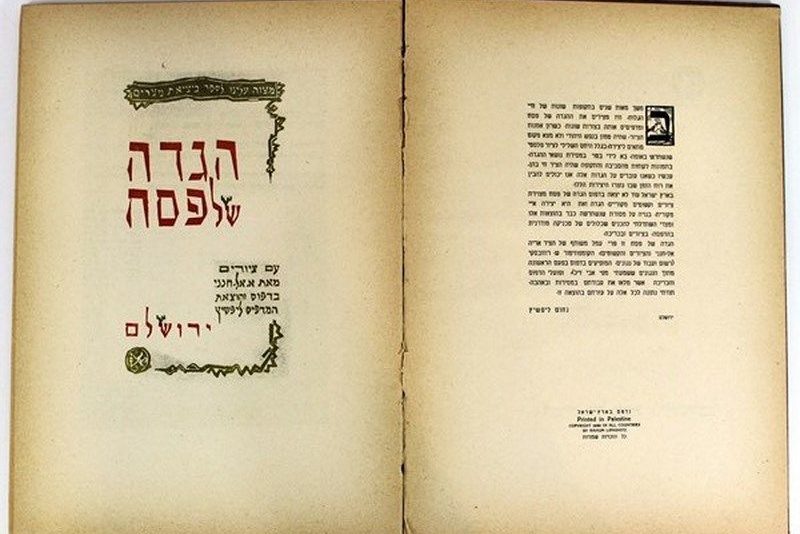The word “Seder” means “order.” It suggests structure and internal meaning. The Pesach, or Passover, Seder follows a definite structure.
Perhaps an aspect of this construction of the Seder was to assure the Jew who, throughout his centuries of Exile, was, in every generation, the victim of outrageous persecution. Though these persecutions came with no apparent rhyme or reason, but only seeming randomness and chaos, the Haggadah helps us understand that from behind the scenes, G-d observes, counts our tears, and is conscious of every detail of our individual and national lives.
There are fifteen steps in the Seder, described in the Haggadah. They are usually sung, to a special melody, at the beginning of the Seder. For convenience and simplicity, we will divide them into three groups of five, six and four steps, respectively.
 The first group of five steps consists of the following:
The first group of five steps consists of the following:
- “Kadesh”
- “Urchatz”
- “Karpas”
- “Yachatz”
- “Maggid”
1. “Kadesh” – Make the special Kiddush for the Festival of Pesach. At this time, each participant drinks from a “kos,” a special cup, sometimes silver, sometimes glass, whatever is affordable for the family. This is the first of the Four Cups of Wine to be drunk during the Seder.
2. “Urchatz” – Wash the hands; In the time of the Temple, whenever food was dipped in a liquid and eaten, one had to wash one’s hands before eating it, for reasons of ritual uncleanness. Since the next step in the Seder will be the eating of a vegetable dipped in salt water, this reminder of Temple times was instituted as part of the Seder.
3. “Karpas” – Eat the vegetable dipped in salt water. Salt water is symbolic of the tears shed by the Jewish People in Egypt and throughout their history, when they were oppressed by their enemies. Some suggest that the vegetable is symbolic of Spring; the season of the year in which Pesach, or Passover, always falls (no pun intended – falls in Spring – ha, ha; whatever).
4. “Yachatz” – Break the middle Matzah and keep half for the Afikoman. The smaller piece, representing the “bread of affliction,” the “poor-man’s bread,” is returned to the Pesach plate to be eaten later (Step 8), for the Mitzvah of Matzah. The larger piece, representing the Pesach Sacrifice, to be eaten at the end of the meal (Step 12), is guarded loosely enough so that it can be “stolen” by the children, and held by them for “ransom.”
5. “Maggid” – Recite the Story of the Exodus, which is the main purpose of the Seder; that is, to tell the story of the Exodus to one’s children or, if that’s not applicable, to one’s spouse or if that’s not applicable, even to oneself.
The Bible says, “And you shall tell your child on that day, ‘This is done because of what G-d did for me when I left Egypt.’ ”
It is an expression of gratitude to Hashem which spans the generations. It is customary for the youngest child present to ask the “Mah Nishtanah,” the Four Questions, to express his or her curiosity about the unusual events taking place at the Seder, those already observed, those seen being prepared in the kitchen, and those learned about in school.
The answer is given, using the narrative principle of “We begin with our shame and end with our praise.”
At the close of the Maggid Section, we recite the blessing which begins “Blessed are You, L-rd our G-d, King of the Universe, Who has redeemed us and our fathers from Egypt…” and which concludes, “Blessed are You, O L-rd, Who has Redeemed Israel.”
With a feeling of joy and gratitude, we then drink the second of the Four Cups, while leaning on our left sides, which was the posture when eating adopted by free men in the time of the Temple. [For health reasons, basically the way Hashem constructed the human body, with a most efficient but somewhat asymmetric design, left-handed people also lean on their left side, lest something go down the “wrong pipe.”]
For the continuation click here: The Fifteen Steps – The Middle Six
